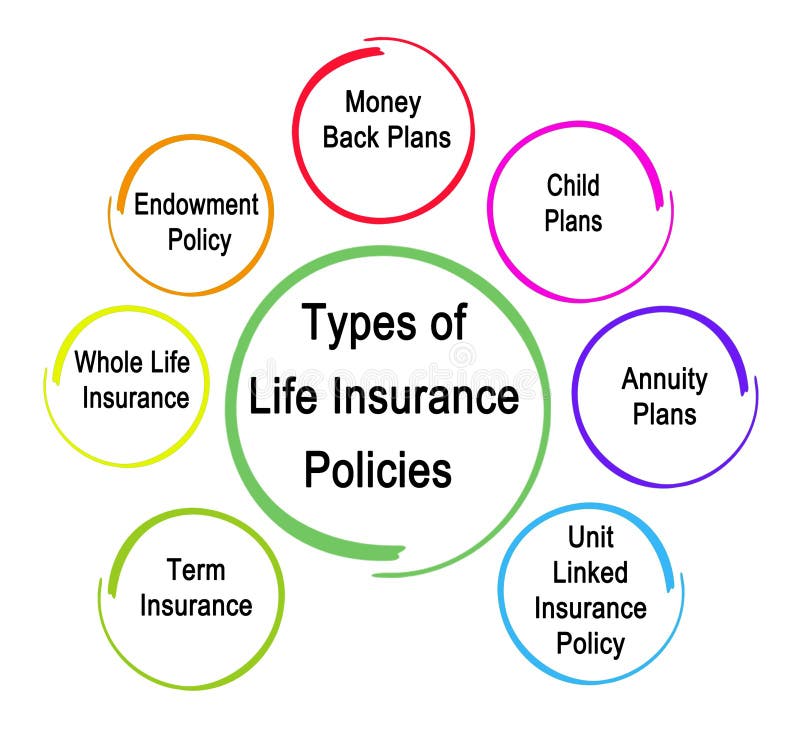Life insurance can be a tricky and overwhelming topic to navigate. With so many different types of policies available, it’s easy to get lost in a sea of options. But have you ever stopped to think about what each one actually does? In this article, we’ll delve into the world of life insurance and break down the different types of policies out there, helping you make a more informed decision for you and your loved ones.

Term Life Insurance: The Budget-Friendly Option
Imagine renting an apartment – you pay rent each month, and as long as you keep up with your payments, you get to stay in the space. Term life insurance works in a similar way. You pay a premium each month, and in exchange, you’re covered for a set period of time (usually 10, 20, or 30 years). If you pass away during this time, your policy will pay out a death benefit to your beneficiaries. The upside is that term life insurance tends to be more affordable than other options. The downside? Once the term ends, you’re no longer covered.
Permanent Life Insurance: A Lifetime of Coverage
Now imagine owning that same apartment – once you’ve paid off the mortgage, it’s all yours, and you get to enjoy it for as long as you want. Permanent life insurance works in a similar way. You pay a premium each month, and as long as you keep up with your payments, you’re covered for your entire lifetime. One of the biggest perks of permanent life insurance is that it accumulates a cash value over time, which you can borrow against or use to pay your premiums.
Whole Life Insurance: The Classic Choice
Whole life insurance is a type of permanent life insurance that’s been around for centuries. It’s a straightforward, no-frills policy that pays a level premium for your entire lifetime. In exchange, you get a guaranteed death benefit and a cash value that grows at a fixed rate. Whole life insurance is often more expensive than term life insurance, but it’s a solid choice for those who want lifetime coverage with a guaranteed payout.
Universal Life Insurance: Flexibility Is Key
Universal life insurance is another type of permanent life insurance that offers a bit more flexibility. With a universal life policy, you can adjust your premium payments, death benefit, and investment options to suit your changing needs. It’s like having a Swiss Army knife – it can adapt to different situations. But keep in mind that universal life insurance can be more complex, and the investments can be riskier.
Variable Life Insurance: Invest in Your Future
Variable life insurance is a type of permanent life insurance that lets you invest your cash value in a variety of assets, such as stocks or mutual funds. It’s like a retirement account that also provides a death benefit. The benefit is that your cash value can grow more quickly, but the risk is that it can also decline in value. Variable life insurance is best suited for those who are comfortable with investment risk and want to potentially grow their wealth.
Indexed Universal Life Insurance: The Hybrid Option
Indexed universal life insurance is a hybrid policy that combines the flexibility of universal life insurance with the investment potential of variable life insurance. It’s like having the best of both worlds. With an indexed universal life policy, your cash value is tied to the performance of a specific stock market index (like the S&P 500), which can potentially earn higher returns. However, the returns are typically capped, and the fees can be higher.
Final Expense Life Insurance: Funeral Coverage
Imagine the funeral expenses piling up after a loved one passes away – it can be a significant financial burden. Final expense life insurance is designed to cover these costs. It’s a small policy that pays a fixed death benefit (usually around $5,000 to $25,000) to help cover funeral expenses, medical bills, and other final costs. Final expense life insurance is often easier to qualify for, and the premiums are typically lower.
Mortgage Life Insurance: Pay Off the Mortgage
Mortgage life insurance is designed to pay off your outstanding mortgage balance if you pass away. It’s like a safety net that ensures your loved ones don’t have to worry about making mortgage payments on top of everything else. Mortgage life insurance is often sold in conjunction with a mortgage loan, and the premiums are typically lower.
Disability Income Insurance: Protect Your Income
Disability income insurance is often overlooked, but it’s a vital part of a comprehensive insurance plan. If you’re unable to work due to an illness or injury, disability income insurance can replace a portion of your income, helping you cover essential expenses like rent, food, and medical bills. It’s like having a backup plan that ensures you can continue to support yourself and your loved ones.
Life insurance can be a daunting topic, but it’s essential to understand the different types of policies available. By exploring the unique features and benefits of each one, you can make an informed decision that protects your loved ones and provides peace of mind. Remember, life insurance is not a one-size-fits-all solution – it’s essential to find the policy that best fits your needs and budget.




